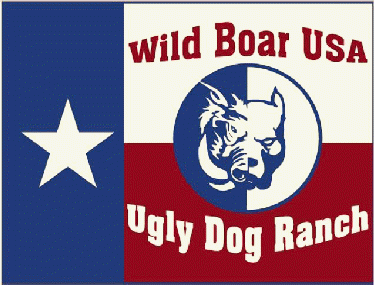I have been reading some of Teddy Roosevelt's writings about hunting with dogs and came across this and since it's public domain, I will paste some parts of the story and a link to the book online.
From "HUNTING THE GRISLY AND OTHER SKETCHES by Theodore Roosevelt: An Account of the Big Game of the United States and its Chase with Horse, Hound, and Rifle
This text was prepared from a 1902 edition, published by G. P. Putnam's Sons, New York and London. It was originally published in 1893. It is part II of "The Wilderness Hunter." "
CHAPTER VI.—A PECCARY HUNT ON THE NUECES.
In the United States the peccary is only found in the southernmost corner of Texas. In April 1892, I made a flying visit to the ranch country of this region, starting from the town of Uvalde with a Texan friend, Mr. John
Moore. My trip being very hurried, I had but a couple of days to devote to hunting.
Our first halting-place was at a ranch on the Frio.....
When we reached the Frio ranch a herd of a thousand cattle had just been gathered, and two or three hundred beeves and young stock were being cut out to be driven northward over the trail. The cattle were worked in pens much more than in the North, and on all the ranches there were chutes with steering gates, by means of which individuals of a herd could be dexterously shifted into various corrals. The branding of the calves was done ordinarily in one of these corrals and on foot, the calf being always roped by both forelegs; otherwise the work of the cowpunchers was much like that of their brothers in the North. As a whole, however, they were distinctly more proficient with the rope, and at least half of them were Mexicans.
There were some bands of wild cattle living only in the densest timber of the river bottoms which were literally as wild as deer, and moreover very fierce and dangerous. The pursuit of these was exciting and hazardous in the extreme. The men who took part in it showed not only the utmost daring but the most consummate horsemanship and wonderful skill in the use of the rope, the coil being hurled with the force and precision of an iron quoit; a single man speedily overtaking, roping, throwing, and binding down the fiercest steer or bull.
There had been many peccaries, or, as the Mexicans and cowpunchers of the border usually call them, javalinas, round this ranch a few years before the date of my visit. Until 1886, or thereabouts, these little wild hogs were not much molested, and abounded in the dense chaparral around the lower Rio Grande. In that year, however, it was suddenly discovered that their hides had a market value, being worth four bits—that is, half a dollar—apiece; and many Mexicans and not a few shiftless Texans went into the business of hunting them as a means of livelihood. They were more easily killed than deer, and, as a result, they were speedily exterminated in many localities where they had formerly been numerous, and even where they were left were to be found only in greatly diminished numbers. On this particular Frio ranch the last little band had been killed nearly a year before. There were three of them, a boar and two sows, and a couple of the cowboys stumbled on them early one morning while out with a dog. After half a mile's chase the three peccaries ran into a hollow pecan tree, and one of the cowboys, dismounting, improvised a lance by tying his knife to the end of a pole, and killed them all....
Having satisfied myself that there were no javalinas left on the Frio ranch, and being nearly at the end of my holiday, I was about to abandon the effort to get any, when a passing cowman happened to mention the fact that some were still to be found on the Nueces River thirty miles or thereabouts to the southward. Thither I determined to go, and next morning Moore and I started in a buggy drawn by a redoubtable horse, named Jim Swinger, which we were allowed to use because he bucked so under the saddle that nobody on the ranch could ride him....
.....The son of the ranchman, a tall, well-built young fellow, told me at once that there were peccaries in the neighborhood, and that he had himself shot one but two or three days before, and volunteered to lend us horses and pilot us to the game on the morrow, with the help of his two dogs. The last were big black curs with, as we were assured, "considerable hound" in them. One was at the time staying at the ranch house, the other was four or five miles off with a Mexican goat-herder, and it was arranged that early in the morning we should ride down to the latter place, taking the first dog with us and procuring his companion when we reached the goat-herder's house.
We rode away from the river on the dry uplands, where the timber, though thick, was small, consisting almost exclusively of the thorny mesquites. Mixed among them were prickly pears, standing as high as our heads on horseback, and Spanish bayonets, looking in the distance like small palms; and there were many other kinds of cactus, all with poisonous thorns. Two or three times the dogs got on an old trail and rushed off giving tongue, whereat we galloped madly after them, ducking and dodging through and among the clusters of spine-bearing tress and cactus, not without getting a considerable number of thorns in our hands and legs. It was very dry and hot. Where the javalinas live in droves in the river bottoms they often drink at the pools; but when some distance from water they seem to live quite comfortably on the prickly pear, slaking their thirst by eating its hard, juicy fibre.
At last, after several false alarms, and gallops which led to nothing, when it lacked but an hour of sundown we struck a band of five of the little wild hogs. They were running off through the mesquites with a peculiar hopping or bounding motion, and we all, dogs and men, tore after them instantly."
You can read the rest and more here
https://www.gutenberg.org/files/3337/3337-h/3337-h.htm#link2HCH0006



